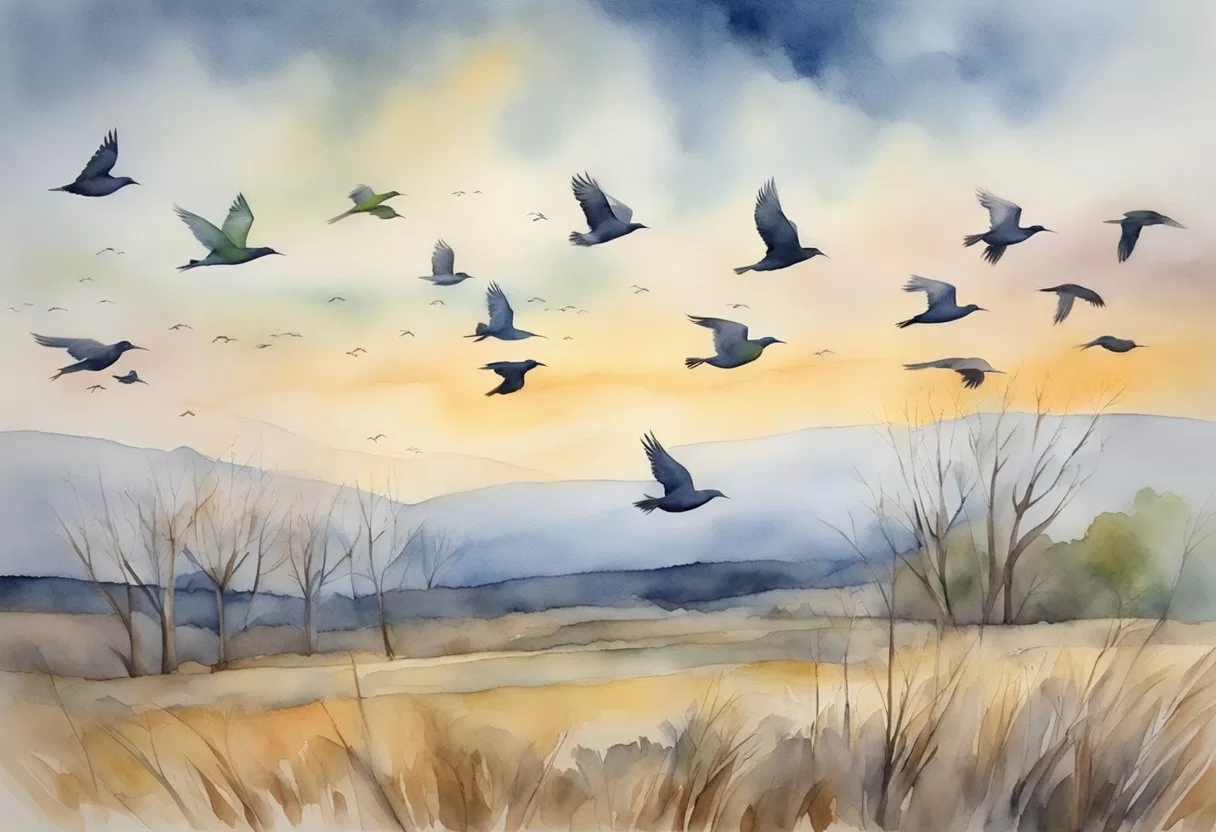Physiological Adaptations for Spring Transition
As winter gives way to spring, birds exhibit remarkable physiological adaptations that enable them to thrive in changing conditions. These adaptations are crucial for transitioning from the cold months when insulation and energy conservation are vital.
Changing Feather Composition
During the transition from winter to spring, birds undergo changes in their feather composition. This involves molting, where they shed old, worn feathers that have provided insulation during the colder months.
The new plumage tends to be lighter and more streamlined, enhancing aerodynamics for spring migration. Some species also develop brighter colors that play a role in mating displays and territorial claims.
This shift serves dual purposes: improving flight efficiency and attracting mates. As temperatures rise, birds trade thicker insulating feathers for those that facilitate better movement and thermoregulation.
Metabolism and Energy Management
Birds also adjust their metabolism as they prepare for spring. With longer daylight hours and increased food availability, their metabolic rate rises, facilitating energy management for migration and breeding activities.
Birds can enter a state of torpor during colder nights, lowering metabolic demands and conserving energy. This temporary hibernation-like state allows them to survive until warmer temperatures return.
Additionally, the intake of high-energy foods becomes essential. Birds repurpose body fat accumulated during winter for energy reserves needed during migration. These metabolic adjustments are key survival strategies that support the demands of springtime activities.
Behavioral Shifts and Survival Tactics

As winter gives way to spring, birds exhibit remarkable behavioral shifts and survival tactics that allow them to adapt to changing environmental conditions. These adaptations are crucial for finding food, navigating migratory routes, and engaging in social behavior, all of which contribute to their survival and reproductive success.
Finding Food in the Thaw
With the arrival of warmer temperatures, the thawing landscape provides new food sources for birds. As snow melts, insects emerge, and plants begin to sprout. This seasonal shift enhances food availability, vital for energy replenishment after winter.
Birds exploit various foraging strategies tailored to their environments. Some species, like finches, may gather seeds from thawing grasses, while others, such as robins, actively hunt for worms and insects. Resilience plays a key role here, as birds adapt their diets based on availability and nutritional needs. In urban areas, they may take advantage of human-provided food sources, illustrating their adaptability to habitat loss and changes in their natural ecosystems.
Migratory Patterns and Navigation
Migration is a critical survival tactic for many bird species. As spring approaches, migrating birds head back to their breeding grounds. This seasonal movement is often driven by the need for optimal resources, including food and nesting sites.
Navigational skills are essential for these journeys. Birds utilize a variety of cues, such as the position of the sun and stars, Earth’s magnetic field, and geographical landmarks. Climate change impacts these patterns, altering the timing of migration and potentially affecting survival rates. Early spring thaw might confuse some species, leading to mismatches between arrival times and food availability.
Social Interactions and Flocking
Social behavior becomes increasingly important as birds transition from winter to spring. Many species engage in flocking, which provides several survival advantages. Flocking increases foraging efficiency, as birds can share information about food sources and protect one another from predators.
In the context of breeding, social interactions facilitate courtship and territory establishment. Males often gather to display their fitness, while females assess potential mates for selection. This behavior supports healthy bird populations, contributing to genetic diversity and resilience against threats such as habitat loss and climate change. By adapting their social structures, birds enhance their chances of successful reproduction during the critical spring season.
Environmental Concerns and Conservation
Environmental conditions directly affect bird populations, particularly during their seasonal transitions. Factors such as climate change and habitat loss drastically alter the landscapes that birds depend on for survival, especially in the North American regions.
Impact of Climate Change on Habitats
Climate change introduces significant challenges to bird habitats. Alterations in temperature and weather patterns can impact winter habitat quality, essential for species like the Kirtland’s warbler and black-throated blue warbler. For instance, increased drought and rainfall variability disrupt nesting and migration cycles.
Birds rely on specific environmental cues to migrate and breed successfully. Changes in these conditions force birds to adapt quickly or risk population decline. Research in current biology indicates that many species struggle to maintain their traditional ranges, with shifting climates leading to increased habitat loss.
Role of Conservation Efforts
Conservation measures play a crucial role in countering these environmental challenges. Organizations advocate for the creation of bird-friendly habitats and policies that support sustainable land use. Efforts include afforestation, wetland restoration, and the promotion of agricultural practices that mitigate habitat loss.
Citizen science initiatives engage the public in tracking bird migration and population trends, fostering a deeper understanding of conservation needs. By participating in these efforts, individuals contribute to a larger movement aimed at preserving essential habitats and ensuring the survival of avian species affected by climate change.
Share this content:

Post Comment
You must be logged in to post a comment.